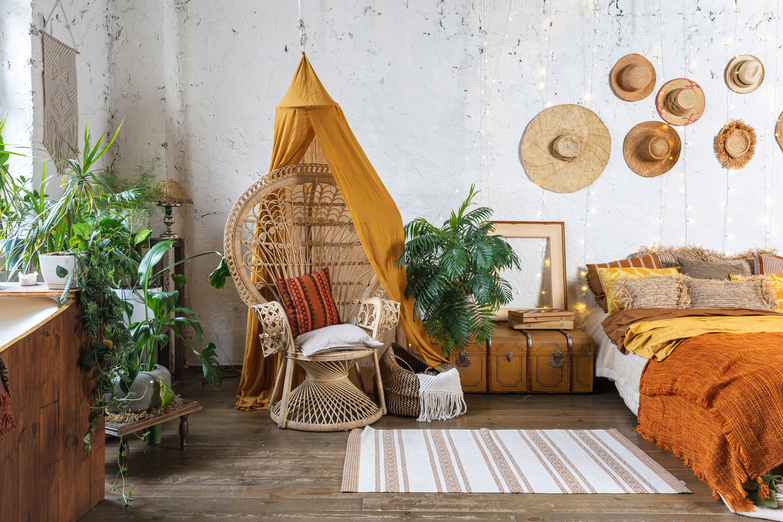
Photo Credit: Shutterstock
Eco-Style interior design is the perfect alternative for someone who values being in nature and environmentally friendly. Walking barefoot on a wooden floor and breathing plants and flowers on your balcony is the gist behind the eco-style interior design, which has the purpose of building an earthy environment that promotes relaxation and comfort.
At the same time this style reinforces the use of natural components, it also praises the careful use of energy and resources, such as solar panels and a smart home system, which saves gas, electricity, and water. Eco-style supports minimalism and the idea of using natural materials that can be recycled and reused.
A way to accomplish an eco-style home is to use lots of plants. If you live in a big country house, then planting a vegetable garden, setting up greenhouses, building a pond, and including plant vases inside your house is a good method. If you live in an apartment, the idea of an eco-home can seem challenging, however, great ways to adhere to the style is to plant a vegetable garden on the windowsill, using pots and the right lighting and temperature, or using decorative touches that match the style, such as a florarium or making a plant frame for a mirror to decorate your walls. You can also arrange a green balcony, by hanging pots of plants over your head, including lots of flowers, and enjoying your weekend morning coffee in the shade of plants at a small wooden table.
Another important element of the eco-style is a natural color palette. To bring about an atmosphere filled with light and air, it is ideal to paint the walls white or pastel colors. The spaces should have a big amount of natural light, as well as shades of yellow, blue, green, and brown. This style also uses wood for flooring and furniture, stone, cork, terracotta, ceramics, glass, and paper as decoration attributes.
For an eco-style design, the environmental impact of a product should be assessed through its entire life cycle, including extraction, production, transportation, and disposal. Materials that renew quickly can be a good option, such as bamboo or cork. The materials should not only be safe for the environment but also for humans. It should have a minimum content of toxic substances and zero toxic emissions of compounds that can harm your health.
